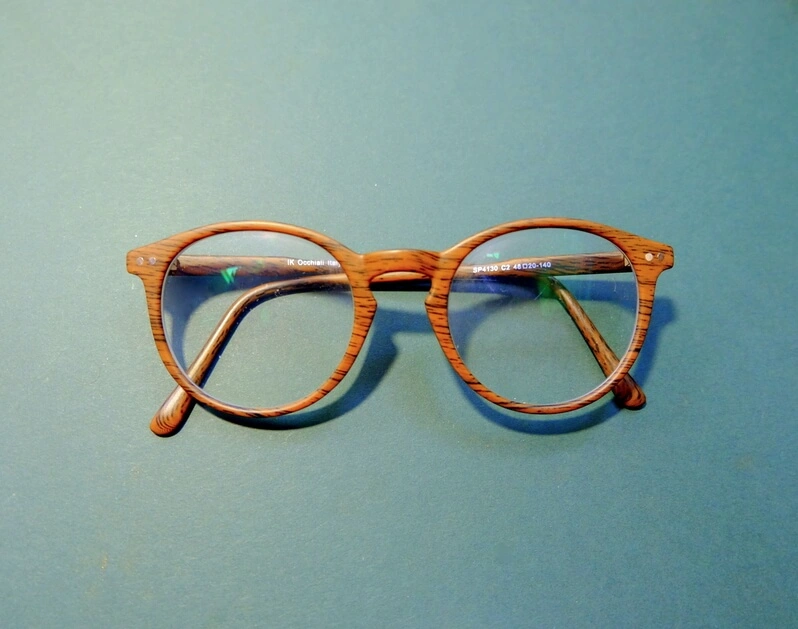How to Choose Eco-Friendly Eyewear

Living a plastic-free lifestyle means individuals must make mindful choices that reduce their environmental impact. Whether it’s through using reusable shopping bags or supporting initiatives to reduce plastic waste, it’s clear that consistent, collective effort is necessary to create a more sustainable world.
However, one area that often escapes our attention is eyewear – an everyday necessity for many. Like other industries, the eyewear industry generates a substantial amount of waste and contributes to environmental degradation. Luckily, eco-friendly eyewear is gaining momentum, allowing consumers to make more environmentally-conscious choices. In this article, we’ll take a closer look at the wastefulness of the eyewear industry and provide comprehensive tips for selecting stylish and eco-friendly eyewear. By consciously opting for slow fashion instead of fast fashion, and slow fashion accessories, including eco-friendly jewelry, sustainable eyewear, and eco-friendly mobile phone cases, you’re lowering your carbon footprint and are contrubuting to a society with less waste.
The Environmental Impact of the Eyewear Industry
The ubiquity of eyewear belies the significant waste and ecological toll it exacts. Traditional eyewear frames, predominantly crafted from non-biodegradable plastics and other materials, contribute to the alarming volume of waste in landfills and oceans.
In fact, the manufacturing process of eyewear exerts a heavy environmental toll. Global sustainability network Common Objective notes that up to 75% of acetate is typically wasted by an eyewear manufacturer. The global eyewear market is expected to reach US$ 206.1 billion (around AU$ 320 billion) by 2032, with plastic eyewear products commanding a substantial market share. The market study shows that plastic use in eyewear goods will increase over the next few years, which indicates continued use of an energy-intensive production process.
Each phase of the eyewear production process contributes to carbon emissions: from raw material extraction to manufacturing and transportation. Additionally, water-intensive dyeing processes and chemical treatments further exacerbate the environmental burden. And when these plastic frames are discarded, they release harmful microplastics that pollute soil and water bodies. This affects marine life and enters the human food chain, posing health risks.
Demand for eyewear will continue to surge due to factors such as fashion trends and increasing vision-related issues. With studies estimating that half the planet will need vision correction by 2050, the industry’s waste generation will amplify as well. This exponential growth contributes to the depletion of natural resources and the release of pollutants, exacerbating climate change and biodiversity loss.
Tips for Choosing Eco-friendly Eyewear
Prioritise sustainable materials
Traditional plastic frames can take up to 200 years to decompose. Meanwhile, alternative materials such as titanium are easily recycled and can be ethically sourced, according to the Villa Eyewear Industry Report. From bio acetate and recycled metal to recycled ocean plastic, these sustainable materials have an aesthetic appeal and also contribute significantly to waste reduction. In fact, bamboo isn’t only biodegradable but also boasts a growth rate of up to 35 inches per day, making it a remarkably sustainable resource for frames.
Brands such as the Australia-based Dresden showcase the transformative potential of eco-conscious design with their ranges of eyewear crafted from a recycled nylon mix. Other brands have eyewear crafted from sustainable wooden materials, with Ray-Ban offering their iconic Clubmasters in light brown and red wood frames. These embody a blend of craftsmanship and environmental sensitivity while reducing the reliance on non-renewable resources.

Evaluate the Brand’s Business Model
A brand’s business model plays a pivotal role when selecting eco-friendly eyewear. Look beyond the surface and delve into the brand’s commitment to sustainability. Aside from offering glasses made from sustainable materials, OPSM is very much aligned with the 2030 UN sustainable development goals and integrates energy-efficient manufacturing and robust waste management into its practices. Simply by educating and training their staff on the four sustainability pillars of their vision, OPSM has successfully halved their wastage in frames and lenses in a year.
Transparent supply chains, ethical sourcing, and fair labour practices further underscore a brand’s commitment to sustainability. By supporting brands prioritising sustainability and responding to global challenges, you vote for ethical practices and a world where business catalyses positive change.
Choose Green Shipping and Packaging
When opting for eco-friendly eyewear, the journey doesn’t end with the frames themselves. Consider the shipping and packaging practices of the brand. Prioritise companies that embrace sustainable shipping methods, such as carbon-neutral or low-impact shipping. With the eyewear brand Costa Del Mar, customers can enjoy free, responsible shipping. Here, shipping providers calculate and offset the climate impact of shipment by funding certified carbon offset projects. These projects can encompass reforestation and renewable energy, with the carbon-neutral service verified by an accredited auditing company.
Otherwise, look for minimal and recyclable packaging that reduces waste. Brands that utilise biodegradable or compostable materials further exemplify their environmental commitment. By supporting brands with eco-conscious shipping and packaging, you extend your sustainability efforts beyond the product and contribute to a reduction in carbon emissions and waste generation.
Support Sustainability Initiatives
The urgency to address plastic pollution has led brands to take a proactive stance. Besides offering green shipping or even using recycled fishing nets in their Untangled collection, Costa Del Mar organises ocean clean-up initiatives as part of its commitment to protecting marine environments. Considering that more than 8 million tonnes of plastic enter our oceans each year, supporting brands engaged in such initiatives directly contributes to our ecosystems’ health.
Meanwhile, brands like Eyebuydirect recognise their role in the larger climate crisis and have taken strides to reduce their carbon footprint. Their eco-friendly lines and carbon offset initiatives reflect an industry-wide movement towards more responsible production.
Choose Timeless Elegance
When selecting eco-friendly eyewear, prioritise frames with timeless designs that transcend fleeting trends. This choice goes beyond personal style: it’s an investment in sustainability. Double bridges and tinted lenses may be among the top eyewear trends to look out for in 2023, but there is no guarantee that these designs will stay in demand after several months. The allure of trendy frames often fades quickly, leading to a cycle of frequent replacements.
Earth 911 notes that more than 4 million pairs of reading glasses are thrown away yearly in North America alone. By opting for enduring styles, you contribute to reducing resource-intensive manufacturing and curtail the waste generated by disposable fashion.

Embrace Vintage, Secondhand, and Donate Your Old Glasses
Opting for pre-owned frames carries a twofold advantage in a world of fast-paced trends. Reducing the demand for new production actually directly lowers the carbon footprint associated with manufacturing. If you need to update your prescription, why not check out the treasure trove of eco-conscious options at thrift shops, online platforms, and vintage boutiques — especially since each previously owned frame tells a unique story?
Moreover, embracing vintage frames encourages a shift in the fashion industry towards longevity and quality. This choice aligns style with environmental consciousness and weakens consumer culture, leading to more responsible choices. To contribute, you can even donate your old specs to local programs like the Lions Recycle for Sight. Specsavers notes that there are unused glasses in about 75% of homes across Bendigo, and residents can easily recycle their older pairs of glasses with their initiative while contributing to a circular economy.
Conclusion
The far-reaching repercussions of the eyewear industry demand our attention. Yet, they also offer an opportunity. Each pair of eco-friendly eyewear you choose means a vote for ethical practices and a world unburdened by waste. Follow our tips in your pursuit of the perfect pair, and let your choices resonate as a testament to responsible consumption and environmental stewardship.
—
Browse the I’m Plastic Free platform to discover sustainable solutions in slow fashion or read our evidence-based plastic free blogs.
Comments
Dave Fredericks
August 5, 2024 at 10:23 pmI have been wearing bamboo framed spectacles for a couple of years now in Australia. Bamboo is an ideal eco-friendly non-plastic eyewear frame material that is lighter than wood, more water resistant and yet still quite strong. Round bamboo frames look great because they emphasize the round Earth with its oceans which need protecting from plastic pollution.



Petronella
October 10, 2023 at 5:31 pmWow!! that was a well researched blog. Thanks for highlighting the waste in eyewear. I really hadn’t given it a thought.
I'm Plastic Free
October 15, 2023 at 9:02 amMany thanks Petronella, yes we try to look at consumerism with a different lens and try to help consumers make more eco-conscious purchases!
Kind regards,
Simona